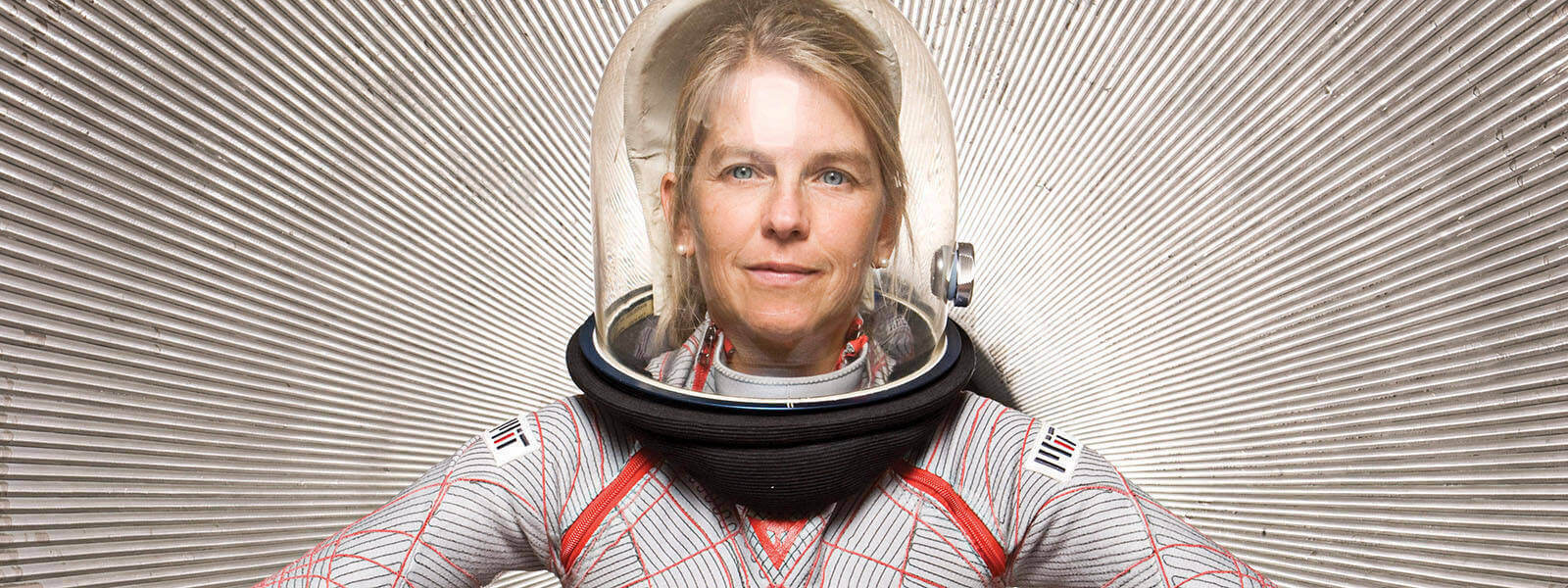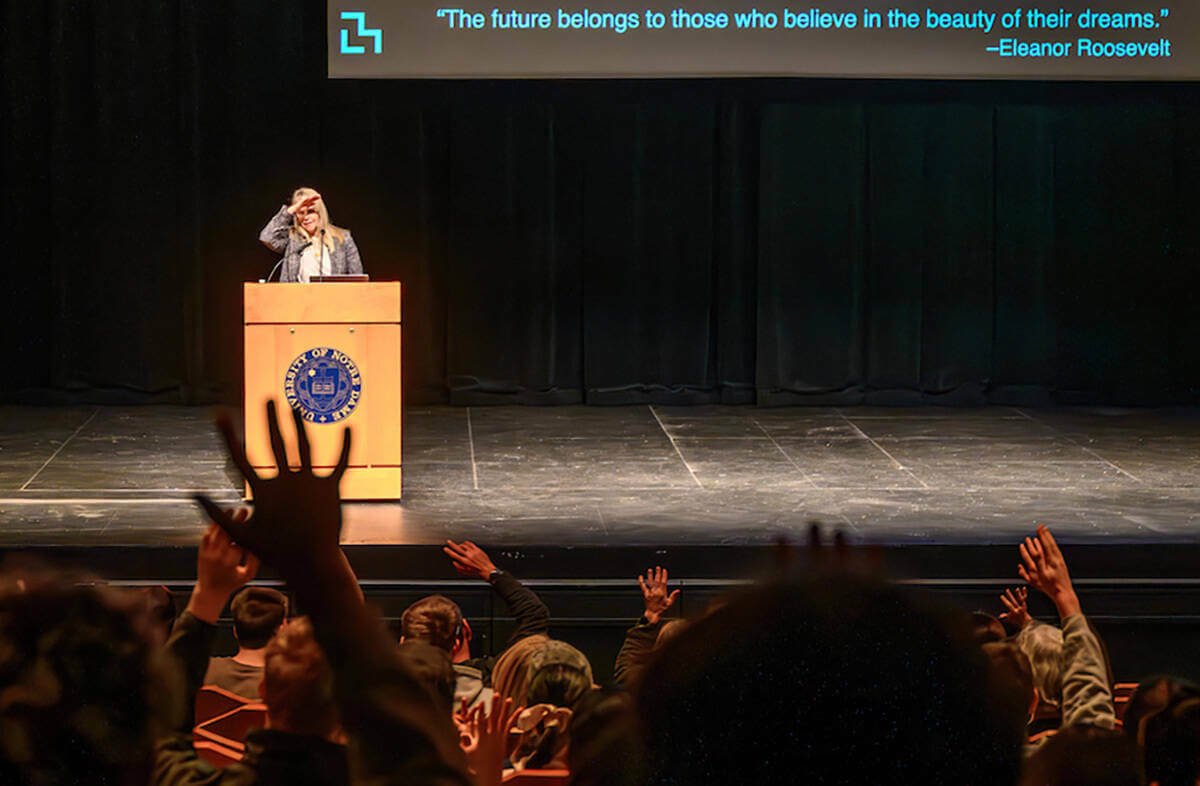

Dava Newman ’86 has an audacious prediction: Humans will find evidence of past or present life elsewhere in the universe in the near future.
“In all of exploration, we have three fundamental questions. They’re big, bold questions: Are we alone in the universe? Are there other habitable planets? And is there life — meaning is there life elsewhere?” asked Newman, the Apollo Program Professor of Astronautics and director of the Media Lab at the Massachusetts Institute of Technology, during a December 7 lecture at the DeBartolo Center for the Performing Arts. “The evidence is mounting. Big prediction: People will find life, probably in this coming decade.”
Contributions will be needed from all disciplines to prepare for a future of interplanetary travel and solving problems on our own planet, Newman said. “We’re all global citizens and we’re all astronauts. We’re all crew on spaceship Earth.”
Newman earned her Notre Dame bachelor’s degree in aerospace engineering, and master’s and doctoral degrees at MIT. She served as NASA Deputy Administrator from 2015 to 2017. Her work in multidisciplinary aerospace biomedical engineering investigates human performance across the spectrum of gravity, including a new generation of spacesuits, life support and astronaut performance.
Much of Newman’s research focuses on getting humans to Mars — and then safely back home. Her appearance on campus was part of the University’s Edison Lecture Series designed to stimulate interest in science and technology. It was a capstone event celebrating 150 years of engineering at Notre Dame.
Following are selections from Newman’s comments:
Predictions about upcoming space exploration:
We will become interplanetary. People are going next to (return to) the moon. I hope we don’t get stuck on the moon for too long because we need to get people to Mars, because scientifically it’s so valuable to go find the evidence of past life.
About chances that evidence of life will be found:
We think that the life we will find, initially, will be past life — very old — but (Mars) has all of the chemistry, it has all of the signs . . . that life could have existed.
About this year’s Axiom Mission 2 (or Ax-2), a privately crewed spaceflight operated by Axiom Space that successfully docked with the International Space Station and returned to Earth:
These public-private partnerships are the thing of the future for NASA. . . . It’s a new ball game. This is disruptive innovation. We can move really quickly. It’s much cheaper and I think it’s a win-win for private companies, as well as the government, as well as academics who want to fly experiments into space.

About the radical new style of “second-skin” space suit she’s been working on, designed to be much lighter and more flexible than the suits that have been used in human spaceflight for more than 50 years:
I design it from the inside out. I take the human body, human performance, and we say, now what kind of system can I put on top — a second skin system literally on top of a human to empower them.
About how trapped greenhouse gasses are heating the Earth, speeding up climate change and creating more natural disasters:
We can change this. So this is not doom and gloom. I’m just showing you the data. It’s completely within our power to change our own behavior at the individual level, to change regionally, to change policies. We have to change everything. This is a complex system. The weather is a complex system, but I’m very optimistic. We just have to have the will to change.
Her delight in learning about Sister Mary Aquinas Kinskey, OSF, ’42M.S. — the “Flying Nun” — who became a pilot, taught aviation and earned a special citation from the U.S Air Force Association:
I wasn’t taught this when I was a student here. But in 1943, Sister Aquinas flew and she (later) was honored. . . . She actually got a national medal for both security and peace. And I think that’s kind of the epitome of Notre Dame and what I learned here.
Margaret Fosmoe is an associate editor of this magazine.